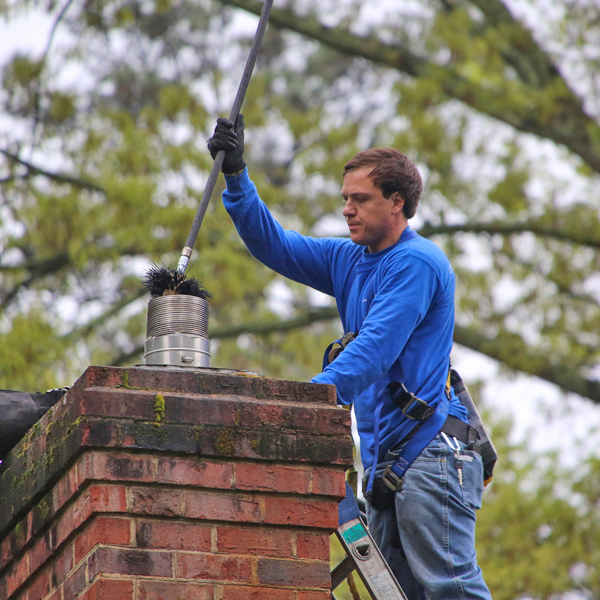Remain Ahead of the Curve: Advanced Chimney Maintenance San Jose Techniques Revealed
Remain Ahead of the Curve: Advanced Chimney Maintenance San Jose Techniques Revealed
Blog Article
Specialist Tips for Effective Chimney Upkeep You Need to Know
Smokeshafts serve as crucial elements in lots of homes, giving warmth and convenience. Nevertheless, ensuring their appropriate maintenance is usually ignored until concerns emerge. Understanding the ins and outs of chimney care can be the key to protecting against costly repair work and safeguarding your home and family members. From the relevance of routine assessments to risk-free operational practices, a detailed technique to smokeshaft maintenance is vital. Allow's discover professional suggestions that can help you keep your chimney in optimal problem for several years to find.
Importance of Normal Assessments
Routine inspections of smokeshafts are important for guaranteeing their safety and security and performance. Chimneys play a critical duty in airing vent out unsafe gases and keeping correct air flow in a home. With time, creosote accumulation, particles, and architectural damages can happen within the smokeshaft, presenting major risks such as smokeshaft fires or carbon monoxide leakages.
During a chimney examination, trained experts analyze the condition of the smokeshaft, searching for any kind of signs of damages, obstructions, or damage. They also inspect the integrity of the flue, smokeshaft liner, and smokeshaft cap to make certain everything is in proper working order. By determining and attending to problems early on, expensive repair services or potential hazards can be avoided.
Normal inspections not only assist in keeping the security of the smokeshaft yet also add to its total effectiveness. A tidy and well-maintained smokeshaft runs much more properly, guaranteeing appropriate air flow and minimizing the danger of interior air contamination. Scheduling annual chimney evaluations is a positive action that property owners can take to safeguard their residential property and liked ones.
Cleaning Strategies and Frequency
Preserving the security and performance of a chimney entails not just routine evaluations but also executing appropriate cleansing strategies and determining the optimum regularity for cleaning. Smokeshafts must be cleaned up by a professional chimney sweeper a minimum of once a year, even if they are not frequently made use of. However, if the smokeshaft is utilized consistently, specifically with wood-burning cooktops or fire places, it may call for more regular cleanings to protect against the build-up of creosote, a very combustible compound that can lead to smokeshaft fires.
Homeowners should never overlook smokeshaft cleansing, as it is important for preserving a safe and functional chimney system. Regular cleanings not only decrease the danger of chimney fires yet also improve the smokeshaft's total efficiency and durability.
Resolving Smokeshaft Leaks

When addressing chimney leakages, detailed inspection and prompt repair services are crucial to avoid water damage and maintain the structural honesty of the smokeshaft. Leakages in a chimney can lead to major issues such as mold growth, wear go and tear of the chimney structure, and even possible fire dangers. To successfully attend to chimney leakages, begin by inspecting the chimney cap, crown, flashing, and stonework for any signs of damages or wear.
Recognizing Creosote Accumulation
To understand the possible dangers of creosote build-up in chimneys, it is important to recognize its development procedure and influence on chimney performance. Creosote is a black or brown tar-like compound that accumulates inside smokeshaft systems when timber or fossil gas are burned. As smoke rises through the smokeshaft, it cools and condenses, resulting in the formation of creosote, which sticks to the smokeshaft walls.

Regular chimney inspections and cleanings by a specialist chimney sweeper are crucial in protecting against creosote build-up and making sure the secure procedure of your smokeshaft system.
Safe Procedure Practices
Applying proper safety and security protocols is essential for the efficient and safe and secure operation of chimney systems. Constantly guarantee that the smokeshaft is properly examined and cleaned regularly to eliminate any kind of creosote build-up, which can lead to chimney fires.
Moreover, see to it to just melt skilled wood in your fireplace, as wet or eco-friendly timber can generate more creosote and cause harmful smokeshaft blockages. Last but not least, never leave a fire unattended and constantly make certain the fire is completely snuffed out prior to going to sleep or leaving your house. By following these safe operation practices, you can delight in a comfy and cozy fire while ensuring the safety of your home and loved ones.
Verdict
In final thought, maintaining your smokeshaft is necessary for guaranteeing its safety and security and effectiveness. Regular assessments, proper cleansing methods, addressing leakages, managing creosote build-up, and adhering to safe procedure techniques are vital elements of smokeshaft maintenance.
Over time, creosote build-up, debris, and architectural damage can happen within the smokeshaft, posturing major threats such as chimney fires or carbon monoxide leaks.
If the smokeshaft is utilized on a regular basis, especially with wood-burning ovens or fire places, it may call for even more constant cleanings to stop the build-up of creosote, a highly flammable material that can lead to smokeshaft fires. (Chimney Maintenance San Jose)
To understand the prospective dangers of creosote build-up in smokeshafts, it is vital to identify its development process and impact on chimney performance. As smoke increases via the smokeshaft, it condenses and cools down, leading to the development of creosote, which sticks to the smokeshaft wall surfaces.
Always make sure that the chimney is properly evaluated and cleaned up frequently to get rid of any kind of creosote buildup, which can lead to smokeshaft fires.
Report this page